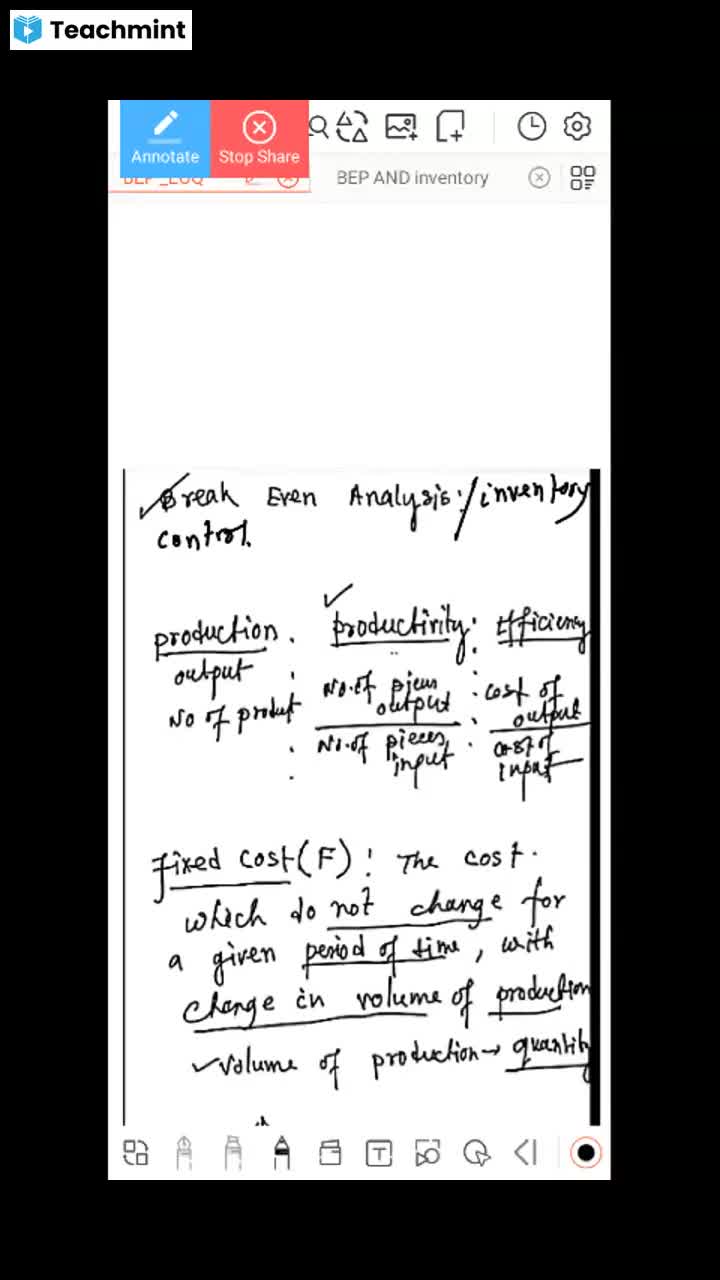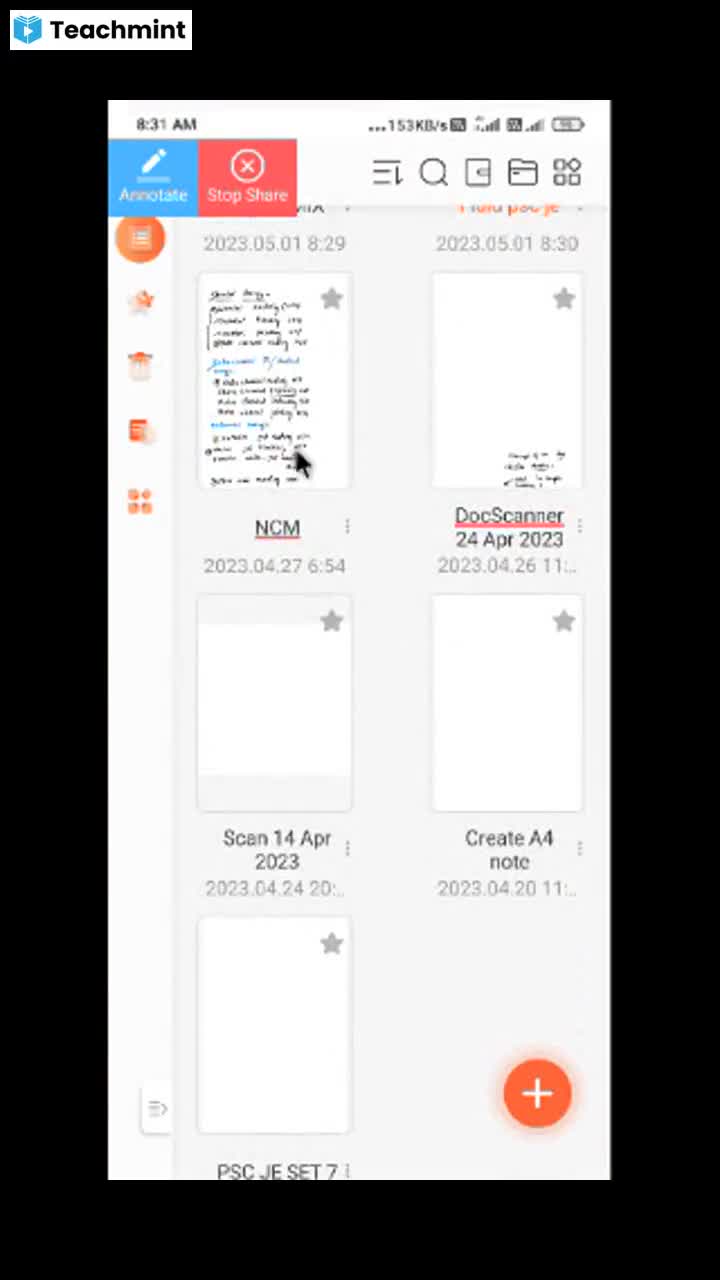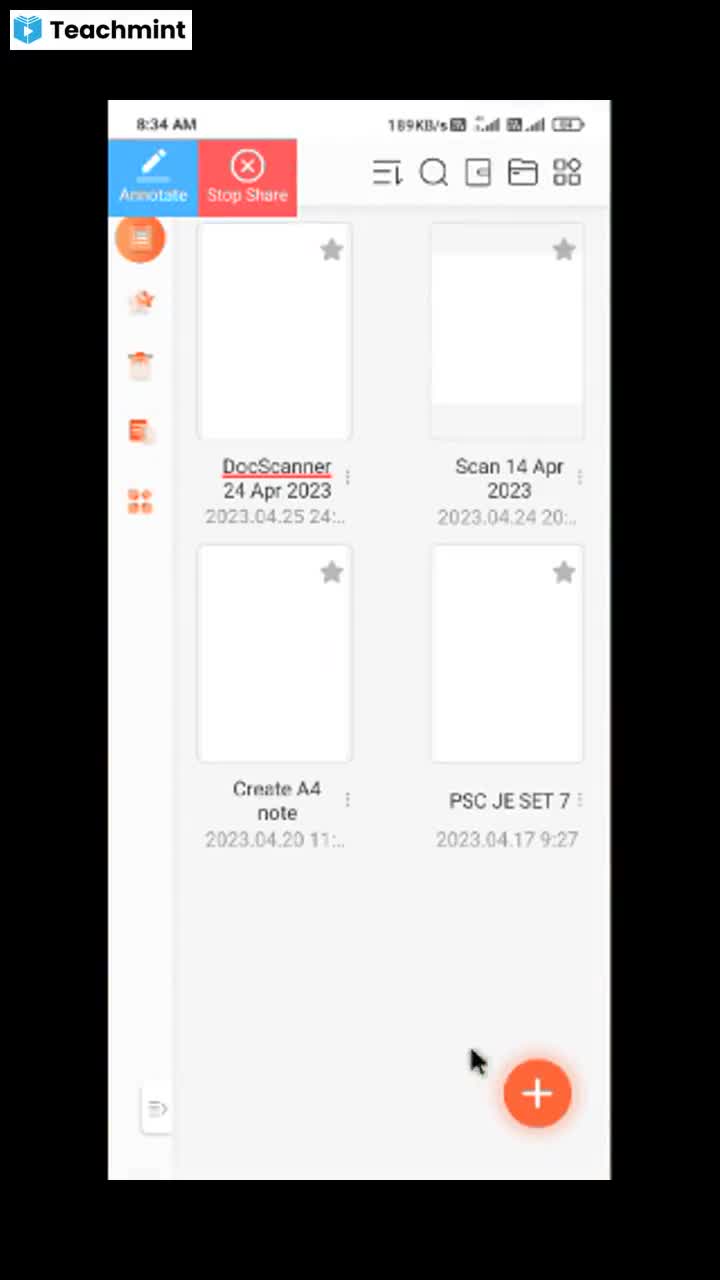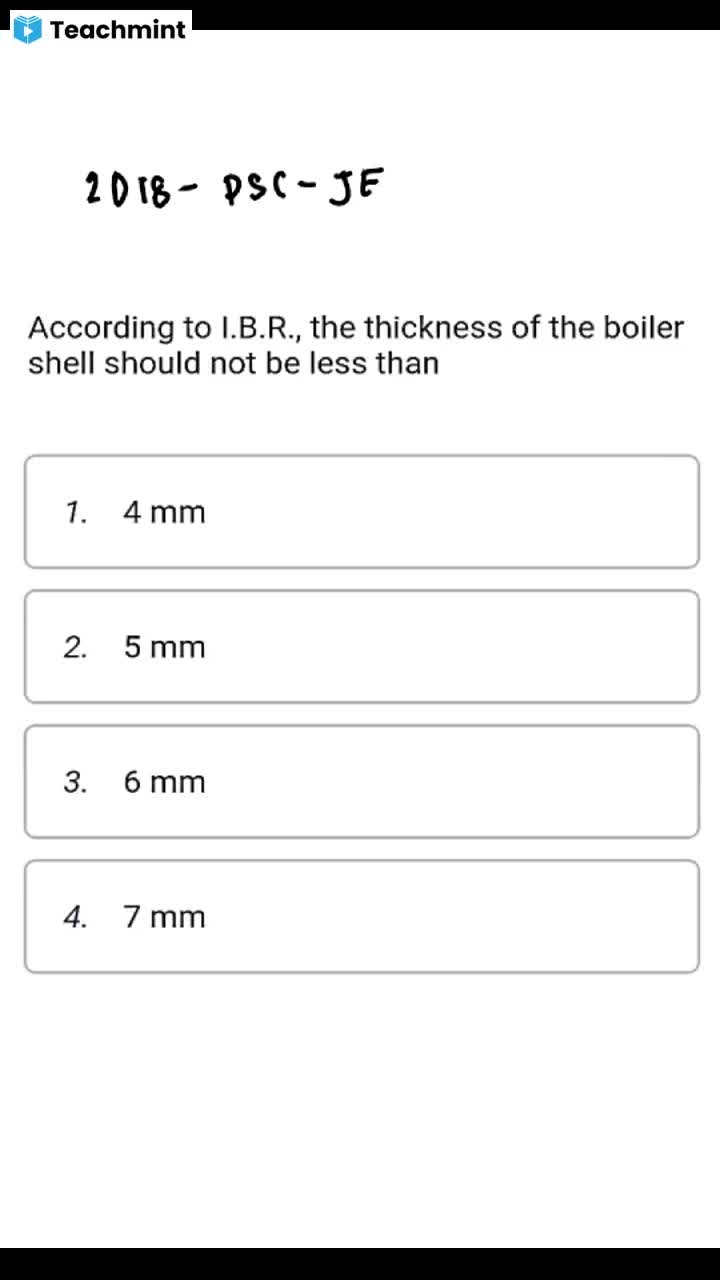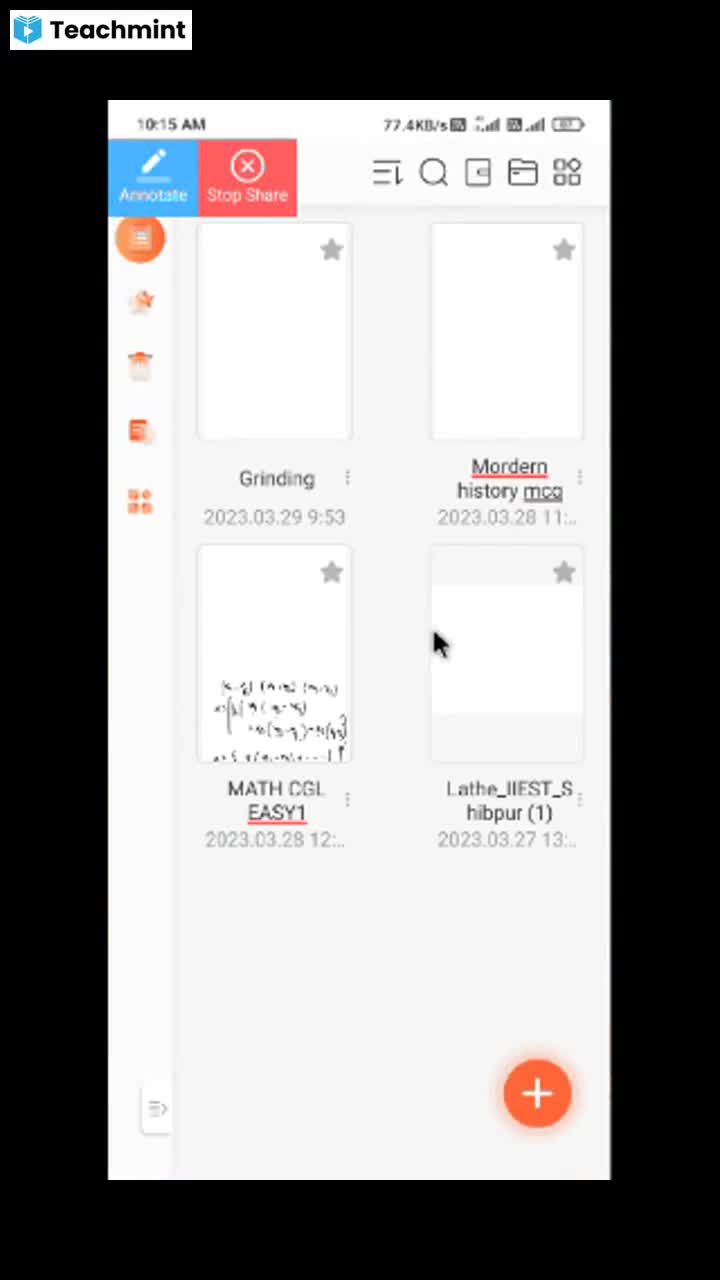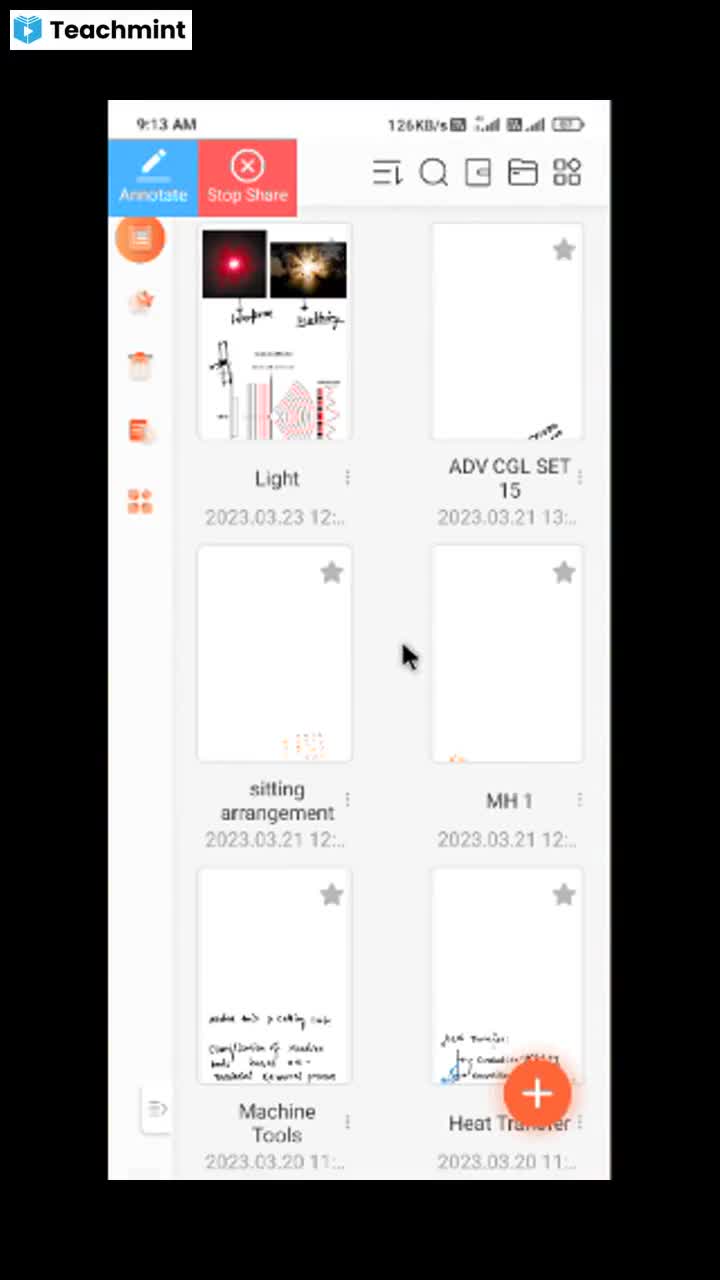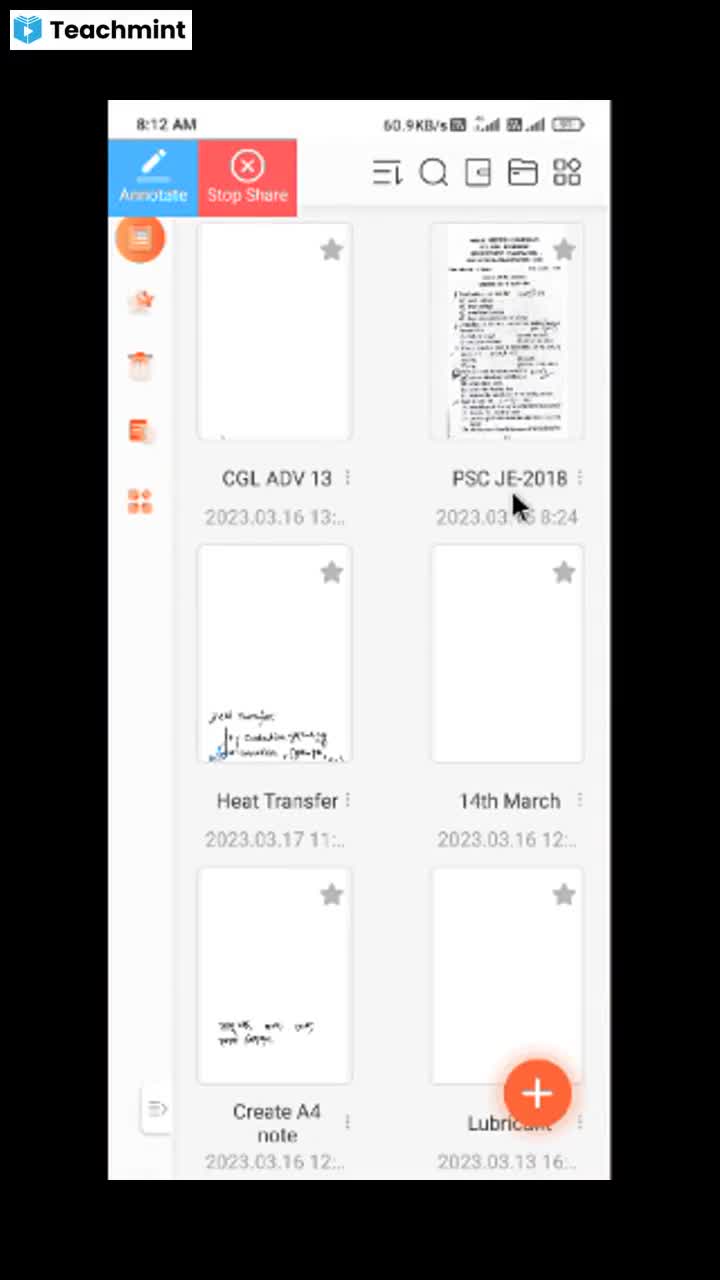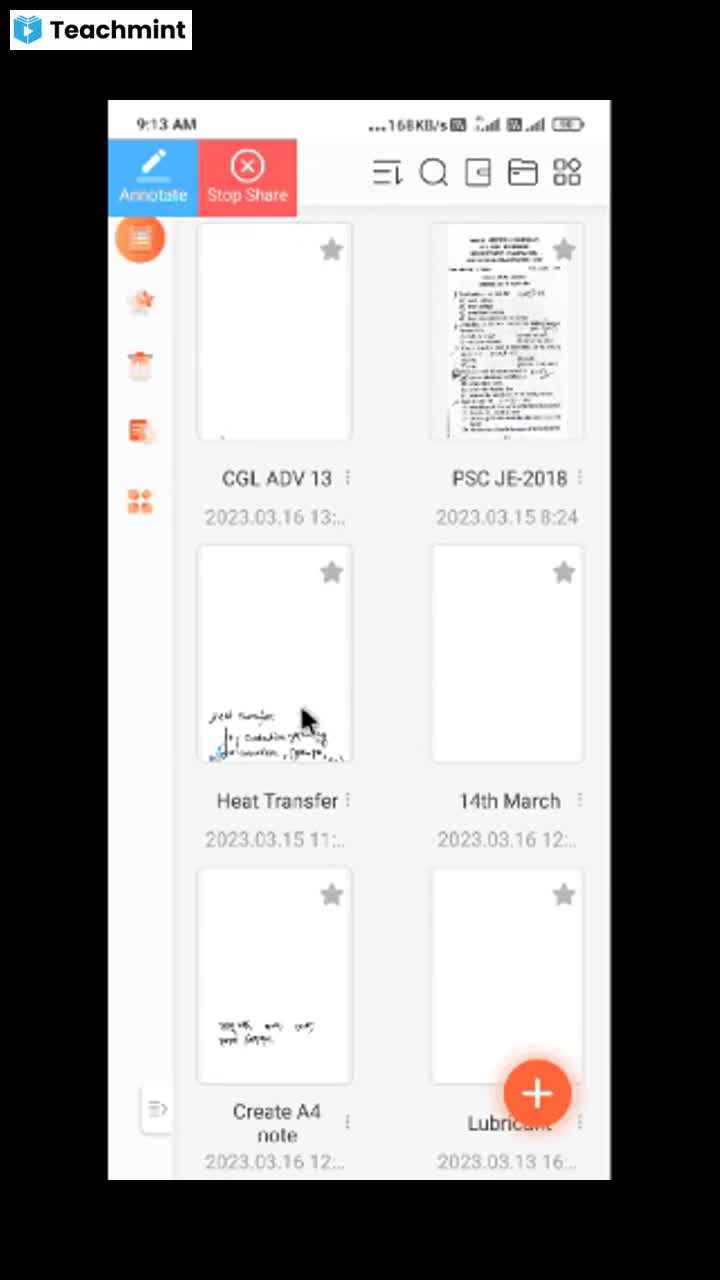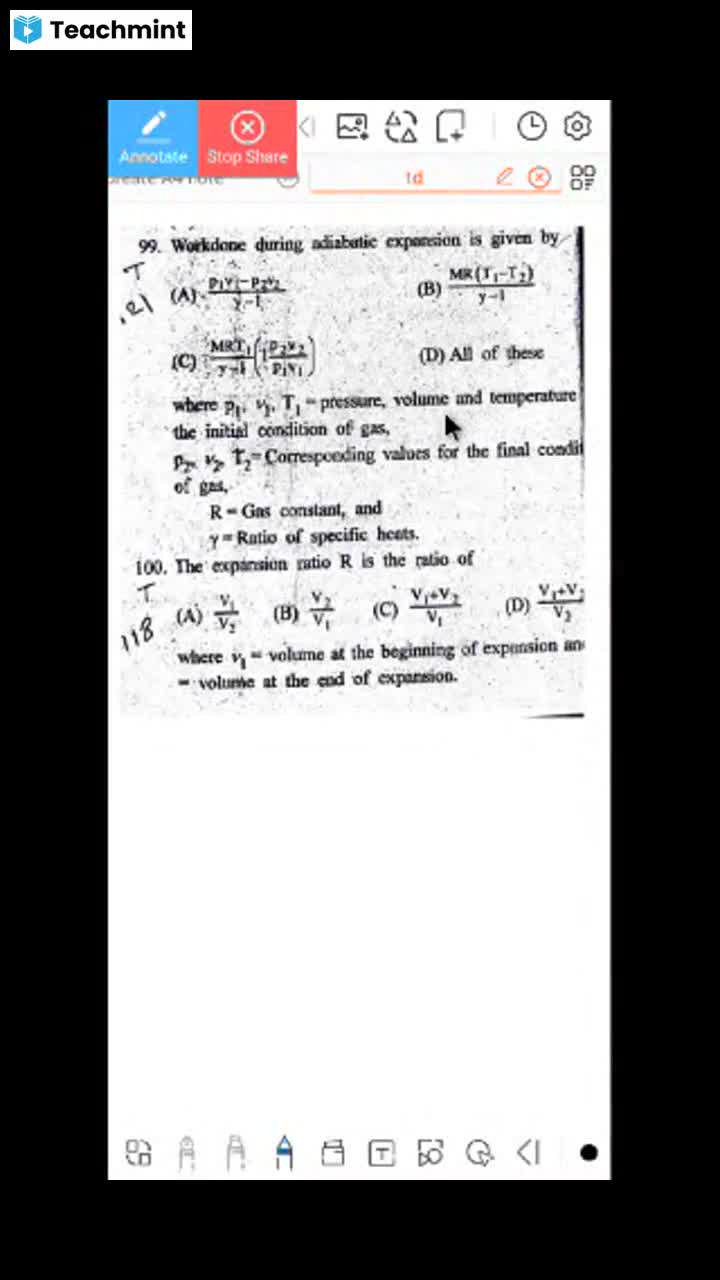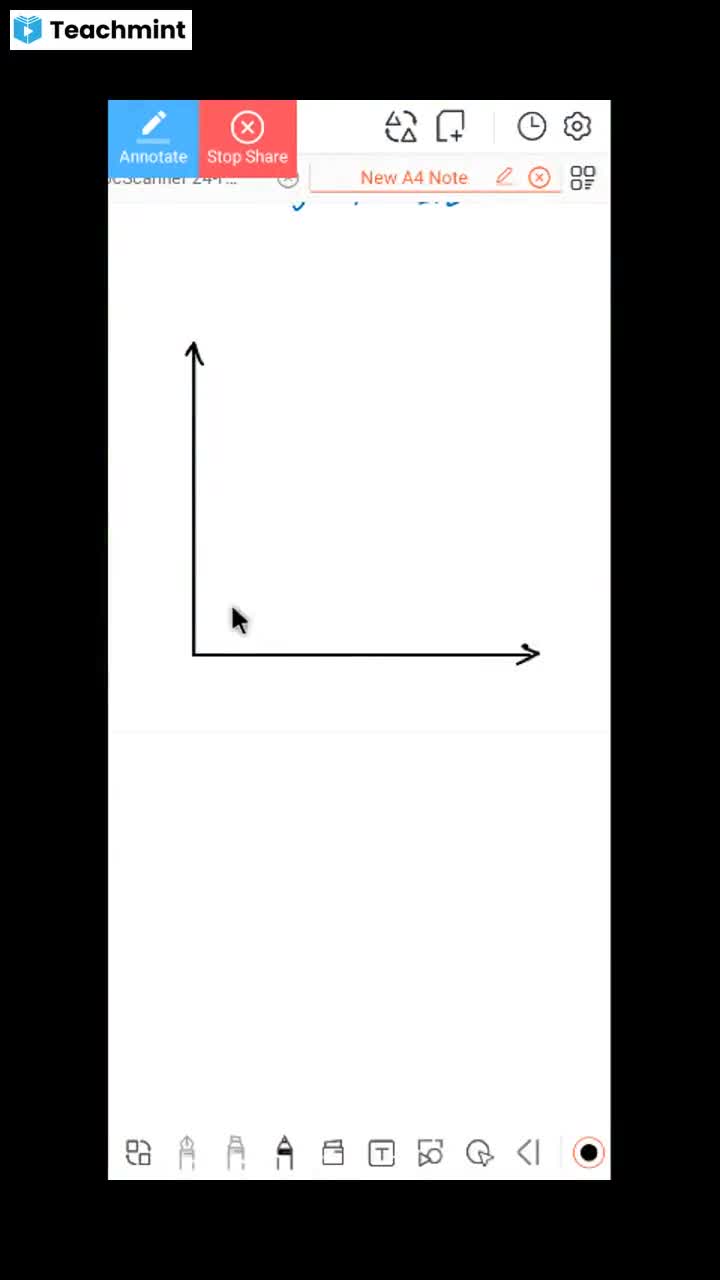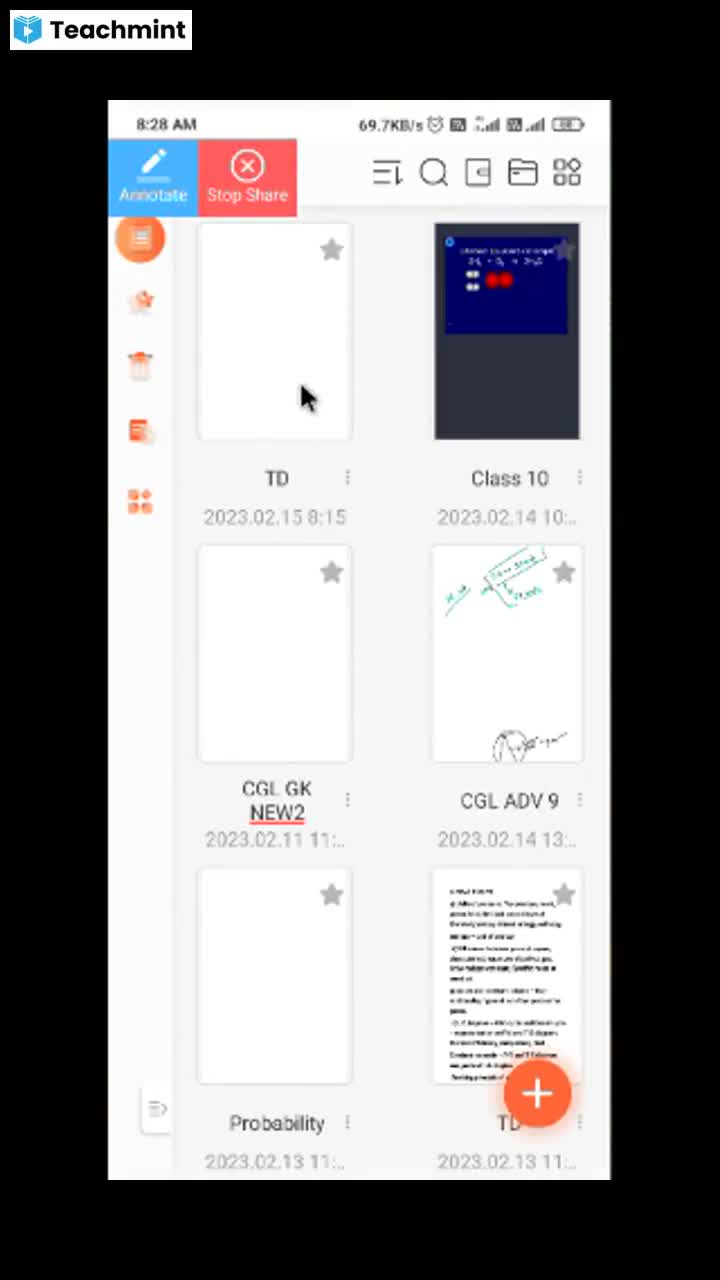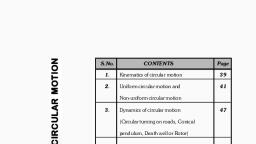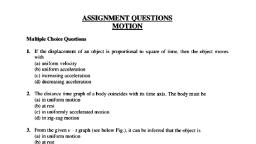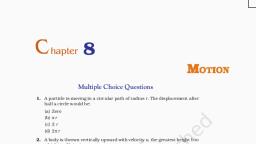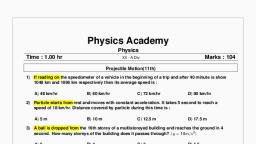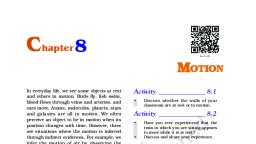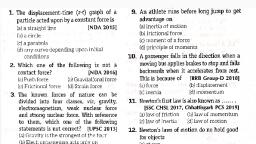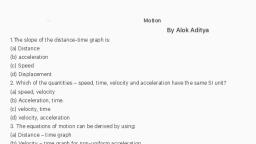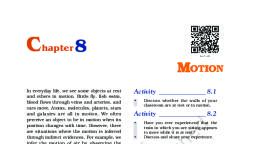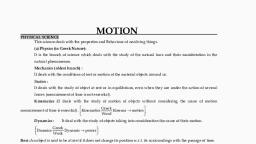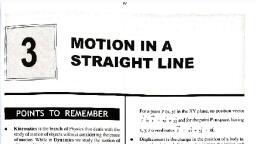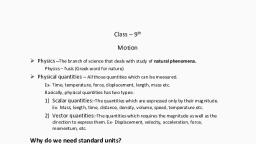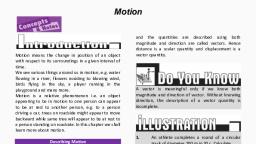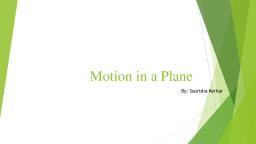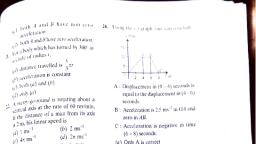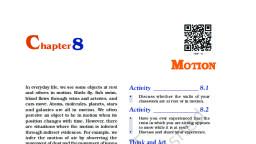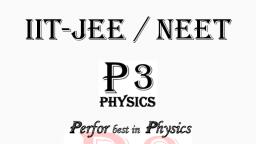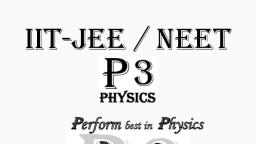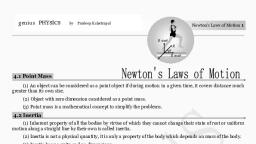Page 1 :
Assessment, , 1. For an object, the state of rest is, , considered to be the state of, speed. [SSC CGL 2017}, (a) increasing (b) decreasing, , (c) inverse (d) zero, , 2. Match the following lists., , , , List I List 1, , A. Motion of billiards 1. One-dimensional, ball motion, , B. Motion of flying 2. Two-dimensional, insect motion, , C. Motion of freely 3. Three-dimensional, falling body motion, , Codes, ABC ABC, , (a) 123 (b) 122, , () 2314 (d) 322, , 3. An object travels 20 m in 6s and then, another 30 m in 4s. What is the average, speed of the object? [RRB Group D 2018], (a) 8 m/s (b) 6 m/s, (c)5 m/s (d) 7 m/s, , 4. After meeting with an accident, a train, starts moving at | its speed. Due to this, it, , is 45 min late. Find the original time of, the journey beyond the point of the, , accident. [RRB Group D 2018], (a) 90 min (b) 120 min, (c) 45 min (d) 135 min, , 5. If the distance s covered by a moving car, , in rectilinear motion with a speed v in, , time t is given by s =vt, then the car, , undergoes [NDA/NA 2014], , (a) a uniform acceleration, , (b) a non-uniform acceleration, , (c) a uniform velocity, , (d) a non-uniform velocity, , 6. Which of the following statements is, , false?, , (a) A body can have zero velocity and still, be accelerated., , (b) A body can have a constant velocity, and still have a varying speed., , (c) A body can have a constant speed and, still have varying velocity., , 7., , 10., , 11, , 12., , 13. ..., , 14., , (d) The direction of the velocity of a body, can change when its acceleration jg, constant., , A car starts from Bengaluru, goes 50 km in, , a straight line towards South, immediately, , turns around and returns to Bengaluru., , The time taken for this round trip is 2h., , The magnitude of the average velocity of, , the car for this round trip —_ [NDA 2019], (a) is zero (b) is 50 km/h, (c) is 25 km/h, , (d) cannot be calculated without knowing, acceleration, , . As the object covers unequal distances in, , equal intervals of time, it is said to be in, , reece motion. [SSC (10 +2) 2018], (a) uniform (b) linear, (c) non-uniform (d) equilibrium, , . The rate of change of displacement with, , time is called as ...... ‘, (a) force, (c) retardation, , [SSC 2017], (b) acceleration, (d) velocity, During ........... motion of an object along a, straight line, the change in velocity of the, object for any time interval is zero., , [SSC (10+ 2) 2018], (b) translational, (d) uniform, , Which one of the following does not match, , (a) linear, (c) equilibrium, , the group? [RRB NTPC 2016], (a) Speed (b) Time, , (c) Mass (d) Acceleration, , In negative acceleration, the velocity of a, body .......00. < [RRB Group D 2018], (a) is zero (b) increases, , (c) decreases (d) remains constant, , . is the change in velocity per unit, , , , time. [RRB Group D 2018], (a) Acceleration (b) Momentum, (c) Force (d) Inertia, , For a body moving with uniform, acceleration its final velocity equals, sruestiwenene [SSC (10 +2) 2018], (a) average velocity — initial velocity, , (b) 2x average velocity — initial velocity, , (c) 2x average velocity + initial velocity, , (d) average velocity + initial velocity
Page 2 :
15. Find the acceleration (in m/s”) of a body, which accelerates from 10 m/s to 20 m/s, in 4 seconds. [SSC (1042) 2018], (a) 7.5 (b) 5 (c) 15 (d) 2.5, , 16. If an object moves with constant, velocity, then which one of the following, statement is not correct? [NDA 2018], (a) Its motion is along a straight line., , (b) Its speed changes with time., , (c) Its acceleration is zero., , (d) Its displacement increases linearly, with time., , 17, A passenger in a moving train tosses a, five rupees coin. If the coin falls behind, him, then the train must be moving with, , a uniform INDA/NA 2014], (a) acceleration (b) deceleration, (c) speed (d) velocity, , 18. The speed of a car travelling ona straight, road is listed below at successive, intervals of 1 s., , , , 21., , Time (s) 0 1 2 3 4, Speed (m/s) 0 2 4 6 8, , Which of the following is/are correct?, The car travels [NDA 2017], I. with a uniform acceleration of 2 m/s’., , I.16min4s., II. with an average speed of 4 m/s., (a) Only I (b) land II, , (c) land III (d) All of these, , In the equation of motion v=u + at, u, represents ........++. . [SSC (10+2) 2018], (a) initial velocity —_(b) final velocity, (c)kineticenergy _— (d) potential energy, The first equation of motion gives the, relation between [RRB ALP 2018], (a) position and time, , (b) velocity and time, , (c) position and velocity, , (d) velocity and acceleration, , The second equation of motion gives the, , relation between [RRB 2018], , (a) velocity and time, , (b) position and time, , (c) position and velocity, , (d) velocity and acceleration, , The motion of a freely falling body is an, , example of ........... accelerated motion., [SSC (10+ 2) 2018], , (b) uniformly, , (a) specially, , 1g., , 20., , 22., , (a) non-uniformly, (c) uniquely, , 23., , 24., , 25., , 26., , 27,, , 28., , —_—:, , In a vacuum, a five-rupee coin a, feather, of sparrow bird and a mango are dropped, simultaneously from the same height. The, time taken by them to reach the bottom is, t,, t,andt,, respectively. In this situation,, , we will observe that [NDA 2017], (a) t, > ty > ty, (b) t, > tg > tg, , (c)tg>ty> ty, , (d) t) = ty =ty, , The distance - time graph for the motion of, an object moving with a constant speed is, a [SSC CGL 2018], (a) dot (b) circle, , (c) straight line (d) curve, , If an object is at rest, then the time, (X-axis) versus distance (Y - axis) graph, (a) is vertical [CDS 2019], (b) is horizontal, , (c) has 45° positive slope, , (d) has 45° negative slope, , The figure shown below gives the time (t’), versus position (x) graph of three objects, A, Band C. Which one of the following is, the correct relation between their speeds, Var Vp and Vc, respectively at any instant, , (t >0y [NDA 2019], Time, 0 mass, A, Oo Position (x), , (a)Va<Vg<Vo, , (b) Va>Vp>Vo, , (c) Vy, =Vg=Vc#O, , (d) V4 =Vg=Vc=0, , The slope of a velocity-time graph, , represents [SSC CHSL 2018], (a) acceleration (b) displacement, (c) distance (d) speed, , An object is moving with uniform, acceleration a. Its initial velocity is u and, , after timet , its velocity is v. The equation, , of its motion is v=u + at . The velocity, (along Y-axis)-time (along X-axis) graph, will be a straight line [NDA 2018], (a) passing through origin, , (b) with X-intercept u, , (c) with Y-intercept u, , (d) with slope u
Page 3 :
29. In the given velocity (v) versus time (t) 35. If an obj, , graph, accelerated and decelerated, motions are respectively Tepresented by, , , , line segments [NDA 2019], =, 2, 38, $, Time (t), (a) CD and BC (b) BC and AB, (c)CD and AB (d) AB and CD, , 30. If an object moves at a non-zero constant, acceleration for a certain interval of time,, then the distance it covers in that time, , [NDA 2019], (a) depends on its initial velocity, (b) is independent of its initial velocity, (c) increases linearly with time, (d) depends on its initial displacement, 31. Which of the following equations, represents the velocity - time relation?, , IRRB Group-D 2018], , (b) 2as =v? — u?, (c)v=u+ at (d) v=u-at, , 32. An iron ball and a wooden ball of the, same radius are released from the same, height in a vacuum. The time taken by, both of the these to reach the ground is, (a) roughly equal (b) zero, (c) exactly equal (d) unequal, , 33. During the motion of a projectile fired, from the earth surface, [SSC CGL 2016], (a) its kinetic energy remains constant, (b) its momentum remains constant, (c) vertical component of its velocity, , remains constant, (d) horizontal component of its velocity, remains constant, , 34. A body moving in a circular path with a, constant speed hasa — [SSC CGL 2016], (a) constant velocity, (b) constant acceleration, (c) constant kinetic energy, (d) constant displacement, , (a)s=ut+ +at?, 2, , 36., , 37,, , 38., , 39., , 40., , ect moves in a circular path with, , , , , , uniform ++eeeeee. its motion is called uniform, circular motion. [SSC CGL 2017), (a) speed (b) time, , (c) velocity (d) acceleration, , A car undergoes a uniform circular motion,, The acceleration of the car is [CDS 2019 (In), (a) zero, , (b) a non-zero constant, , (c) non-zero but not a constant, , (d) None of the above, , If an object undergoes a uniform circular, motion, then its INDA/NA 2013], (a) acceleration remains uniform, , (b) velocity changes, , (c) speed changes, , (d) velocity remains uniform, , A motor vehicle is moving on a circle with a, , uniform speed. The net acceleration of the, , vehicle is [INDA/NA 2013], , (a) zero, , (b) towards the centre of the circle, , (c) away from the centre along the radius of, the circle, , (d) perpendicular to the radius and along, the velocity, , A person standing at the middle point of a, , wooden ladder which starts slipping between, , a vertical wall and the floor of a room, while, , continuing to remain in a vertical plane. The, , path traced by a person standing at the, , middle point of the slipping ladder is, , (a) a straight line (b) an elliptical line, , (c)acircular path (@)a parabolic path, , An object moves in a circular path with a, , constant speed. Which one of the following, , statement is correct? [NDA 2017], , (a) The centripetal acceleration of the object, is smaller for a gentle curve (i.e. curve of, larger radius) than that for a sharp curve, (i.e. curve of smaller radius)., , (b) The centripetal acceleration is greater for, agentle curve than that for a sharp curve., , (c) The centripetal acceleration is the same, for both the gentle and sharp curves., , (d) The centripetal acceleration causes the, object to slow down., , , , 1. (d) 2. (c) 3. (c) 4. (a) 5. (c), 41 (c) 12. (c) 13. (a) 14, (b) 15. (a), 21. (b) 22. (b) 23. (d) 24. (c) 25. (b), 31. (c) 32. (c) 33. (d) 34. (b) 35. (a), , 16., 26., 36., , .) 72 8&@ 9@ 10@, (a) 47. (a) 18. (a) 19. (a) 20.), (b) 27. (a). 28. (c) 29. (a) 30. (a), (b) 37. (bt) 38. (b) 39. () 40. (a)

